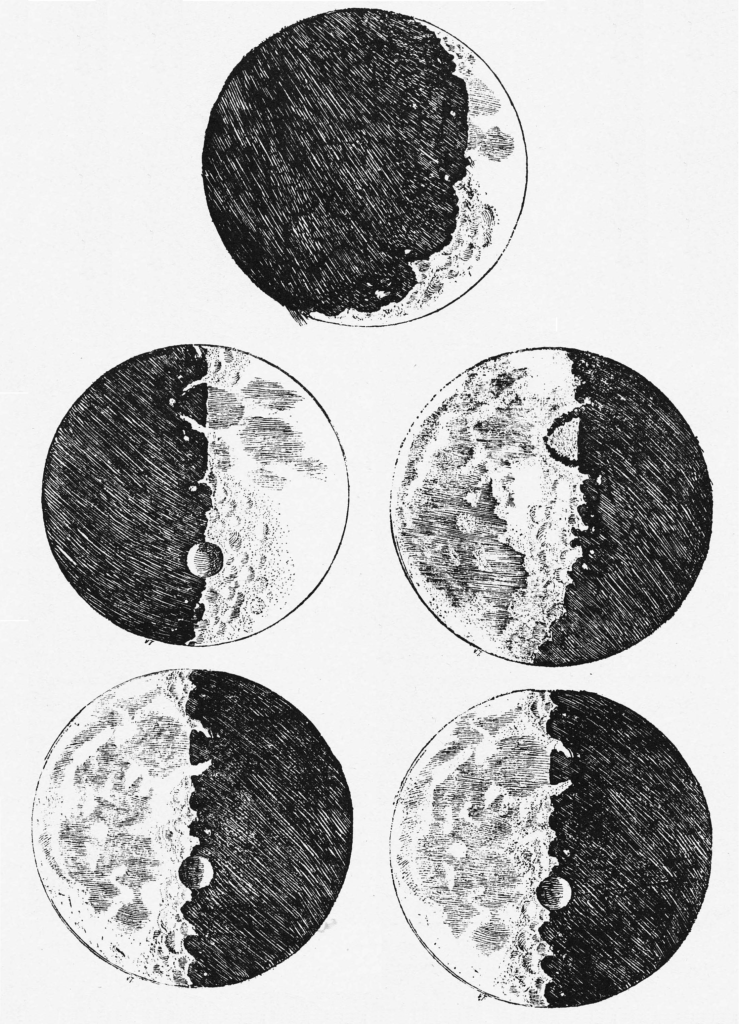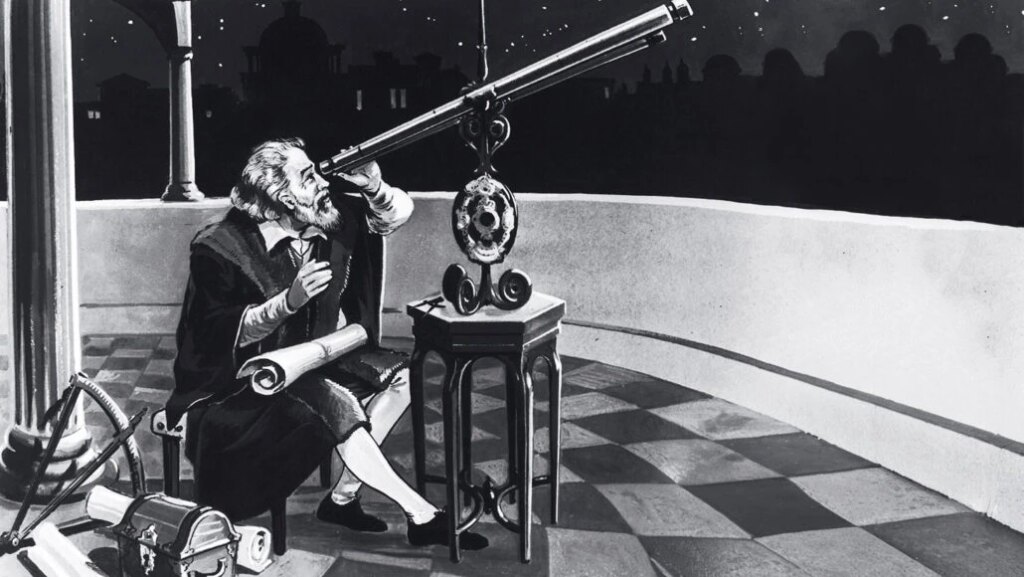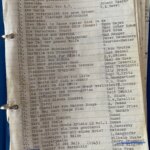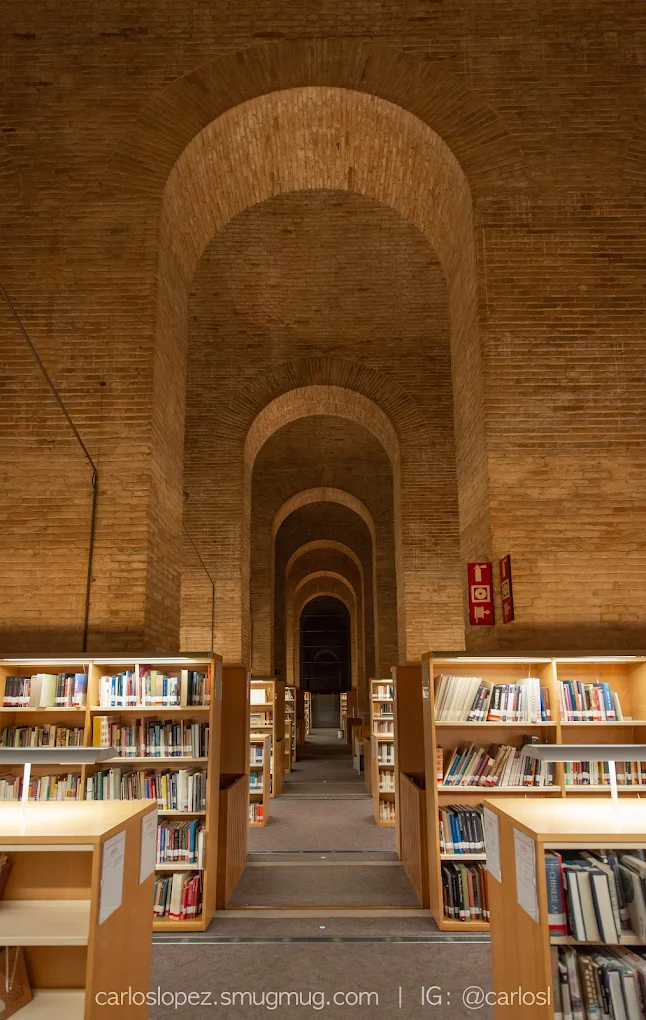Learn more about the history behind Galileo Galilei, his detailed sketches of the moon, and where these sketches are today.
There’s a lot to say about Galileo and how he transformed modern astronomy—and sketches of the moon are the least of it.
Galileo Galilei: (Basically) the Inventor of the Telescope
Galileo Galilei, born in 1564, was known for a lot of things: math, physics, astronomy, the scientific method—basically, he was a genius. But his work in astronomy is what he’s most famous for, and rightly so. It’s thanks to his scientific research that gave humans a deeper insight into our solar system. More specifically, his findings gave light to the theory that the Earth revolves around the sun, along with many other never before thought-of insights.

As for how this was possible? Simply put, this is the man who cobbled together the first telescope that could see the moon. Note, that it technically wasn’t the first telescope. He based his design on a Dutch spyglass from 1608; it likely existed earlier, but the first known record of it is an attempt to patent it in that year. Galileo improved upon the design and increased the magnification by 30 times. And that was enough to let him see the moon in greater detail than anyone else before him.
Before Galileo’s invention, most people thought that the moon was smooth. However, with his telescope, he—and anyone who looked into the telescope—could see the mountains and craters covering the moon’s surface. And it was while looking through his modified spyglass, he drew his famous sketches of the moon.
Art and Science Opening Up a Whole New World
Funnily enough, Galileo wasn’t actually the first person to get a closer look at the moon. Thomas Harriot, an English mathematician, was also looking at the moon in 1609, around the same time as Galileo. However, although he could tell the moon was spotted, he didn’t really understand what he was seeing.

Part of that was due to the technology of the time. Even with 30 times magnification, the image Galileo saw of the moon wasn’t super detailed. But even though art isn’t usually thought of as useful to science, it was invaluable here. Galileo’s artistic training and knowledge of shading techniques helped him understand that the spots he saw on the moon’s surface were shadows.
This became even clearer when he further put his artistic skills to use and sketched the moon as he viewed it. And not just once or twice, but in many different phases.
How Galileo’s Sketches Changed Our Understanding of the Cosmos
The moon wasn’t the only thing Galileo observed. He studied the entire solar system. He took careful note of the phases of Venus and found sunspots on the surface of the sun. He also discovered four of Jupiter’s moons: Io, Europa, Ganymede, and Callisto. You can see the sketch of those moons in the image below.
He even figured out that the Milky Way was not a vague mass or a gaseous cloud, but countless stars stretching out into infinity around us. Additionally, he observed Saturn’s rings, although he didn’t exactly know what they were at the time.

These findings helped support his scientific theory of heliocentrism. I.e., the perspective that planets orbiting the sun, rather than the commonly accepted wisdom of the time that everything revolved around the Earth. This received quite a lot of backlash for it—specifically from the Catholic Church.
The funny thing is that this idea of Earth being the center of the universe isn’t actually in the Bible. It originated from Aristotle, who it turns out was wrong about most everything he said, especially in relation to science. Which tracks, frankly, considering that he was a philosopher, not a scientist. But the Church ran with it and were too stubborn to back down when new evidence emerged. Galileo ended up recanting his theory, likely to avoid getting burned as a heretic, but continued studying until his death in 1642.
Can You See Galileo’s Sketches In Person?
Some of Galileo’s sketches have survived the centuries. Most notably, the Dibner Library of the History of Science and Technology, a safe haven for roughly 37,000 rare texts, holds a 400-year-old volume of Galileo’s book, Sidereus Nuncius. The title translates to “Starry Messenger,” and contains Galileo’s observations made through his telescope, including his sketches of the moon.
Given that the book is so old, one wrong touch or a stray beam of sunlight would have it crumbling faster than Dracula at dawn. So, for the most part, this book is kept under lock and key, safe and preserved in the Dibner Library’s vaults.

From time to time, however, the library will loan out this precious first edition to museums. In 2009, the National Air and Space Museum opened and received the honor of displaying Galileo’s book for three months for its “Explore the Universe” exhibit. Ten years later, the Metropolitan Museum of Art in New York also got the chance to display it during the summer of 2019 for their “Apollo’s Muse: The Moon in the Age of Photography” exhibit.
Given that there were ten years between the last two viewings, it may be a while before the public can once again see a first edition Sidereus Nuncius in person. On the bright side, the book has long been in the public domain, so you can easily find his sketches online, buy modern and translated editions of the book, and on occasion, visit museum exhibits with reproductions of Galileo’s works.

Join our community of 1.5M readers
Like this story? You'll love our free weekly magazine.








